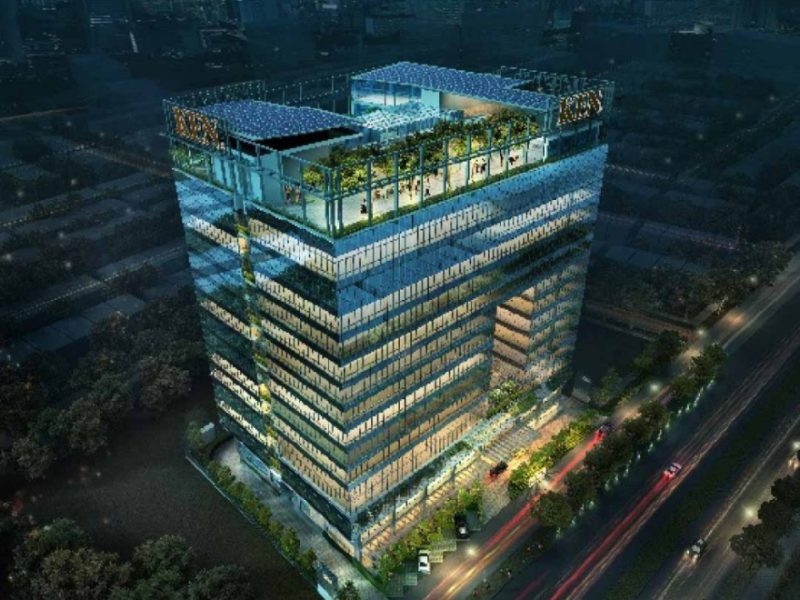The Making of Cool Offices
Text By Focus Malaysia | April 23-29, 2016
From rooftop gardens to open spaces, workplaces are becoming more employee-friendly to attract and retain the best brains.

We have all seen the Google Inc offices worldwide. They are incredible and serve to encourage youths to want to work there. In many cases, they are akin to mini-resorts rather than workplaces.
Their Zurich, Switzerland office has a basketball court, different themed gondolas which serve as meeting rooms, an aquarium where employees can relax in a foam-filled bath and much more.
While such office spaces tend to be more common among technology companies like Google, Information technology consulting company Infosys Ltd, and social media facilitator Facebook, other companies have their own take on being cool.
In our country, it is the telecommunication companies that have the funkiest offices. But that does not mean an office has to be fun and playful to make employees of other companies become envious.
Some offices are classical and timeless. The Selgas Cano Architecture office in Madrid, Spain, which is located in the middle of the woods is half underground and covered by a glass canopy.
A large window runs the length of it and provides employees a gorgeous, round-the-clock panoramic view.
Other cool offices that come to mind include the littleBits headquarters office and the Wieden Kennedy Offices, both in New York, the office greenhouse by OpenAD_OpenAD in Riga, Latvia and Warner Music UK office in London.
The Benefit
Other cool offices that come to mind include the littleBits headquarters office and the Wieden Kennedy Offices, both in New York, the office greenhouse by OpenAD_OpenAD in Riga, Latvia and Warner Music UK’s London office.
On Level 12 of our new KEN corporate office which is nearing completion, we use the corridor to create an interactive meeting space. Our rooftop garden provides a green space and fosters interaction among our staff when they are taking a break.
We hope the comfortable passageway can help encourage a smile or a “good day” among those having lunch or just walking past each other. These spaces should allow for more interaction and hopefully, foster better relationships among employees. While the choice and manner of using these spaces remain with the employees, not providing such spaces is akin to not giving them such opportunities. If we build comfortable and interactive spaces that are pleasant to use and put people at ease, then more people will use it and be encouraged to interact.
So why would corporations spend millions to create cool office? Is it just aesthetics?
Truth is, the reasons go beyond staff motivation. A cool office can be part of a corporation’s branding, reflect the company’s culture and be a living advertisement to attract recruits. Given the need to hire capable professionals, companies have to come up with myriad ways to attract top talents. One way is by creating an aesthetically inviting workplace.
Depending on how you design it, the workplace can provide employees a chance to destress and no think about work for the few minutes that they sip coffee in an indoor park. Brightly coloured meeting rooms with interesting designs help stir up employees’ creative juices. There are, of course, other reasons employee choose to work and remain with companies. Having a cool office is merely one of them.
The next step, of course, is to infuse the green agenda with cool workplaces. The KEN corporate office has its green rooftop and that’s all part of our corporation being green. There are many examples of corporations adding gardens to their building to create a cool workplace. But it is also good for the environment and can help reduce the city’s temperature if enough buildings adopt the concept. That doesn’t mean companies should rush to join the “cool offices” bandwagon as it’s important to assess their own needs first.
In designing the workplace, the have to focus on who will be using the workspaces and how it will be utilised. Active design, which refers to the work environment that encourages staff movement and interaction should be considered, especially with the Millennials or as Gen Ys.
Designing for Gen Ys
Offices employees tend to be seated for most of the day, so placing the photocopy and printing machines away from the desks encourages staff to walk.
Flexibility should be another focus. The majority of new hires tend to be fresh graduates transitioning from a flexible collegiate atmosphere to the more structured corporate world.
This group of employees will take longer to understand their corporate roles and are at increased risk of resigning if the going gets to tough. To create a comfortable environment that will help Gen Ys remain productive, it’s important to offer them workspaces that are comfortable to get their work done.
Designing for Gen Ys must factor in how demographic changes might impact the future workforce. Providing unisex washroom facilities means being more sensitive to the needs of transgender. Having wheelchair accessible entries and facilities for physically-impaired employees also helps.
The way is set for the future. The number of companies that will create their own version of cool office will ultimately depend on the directors’ mindsets.
